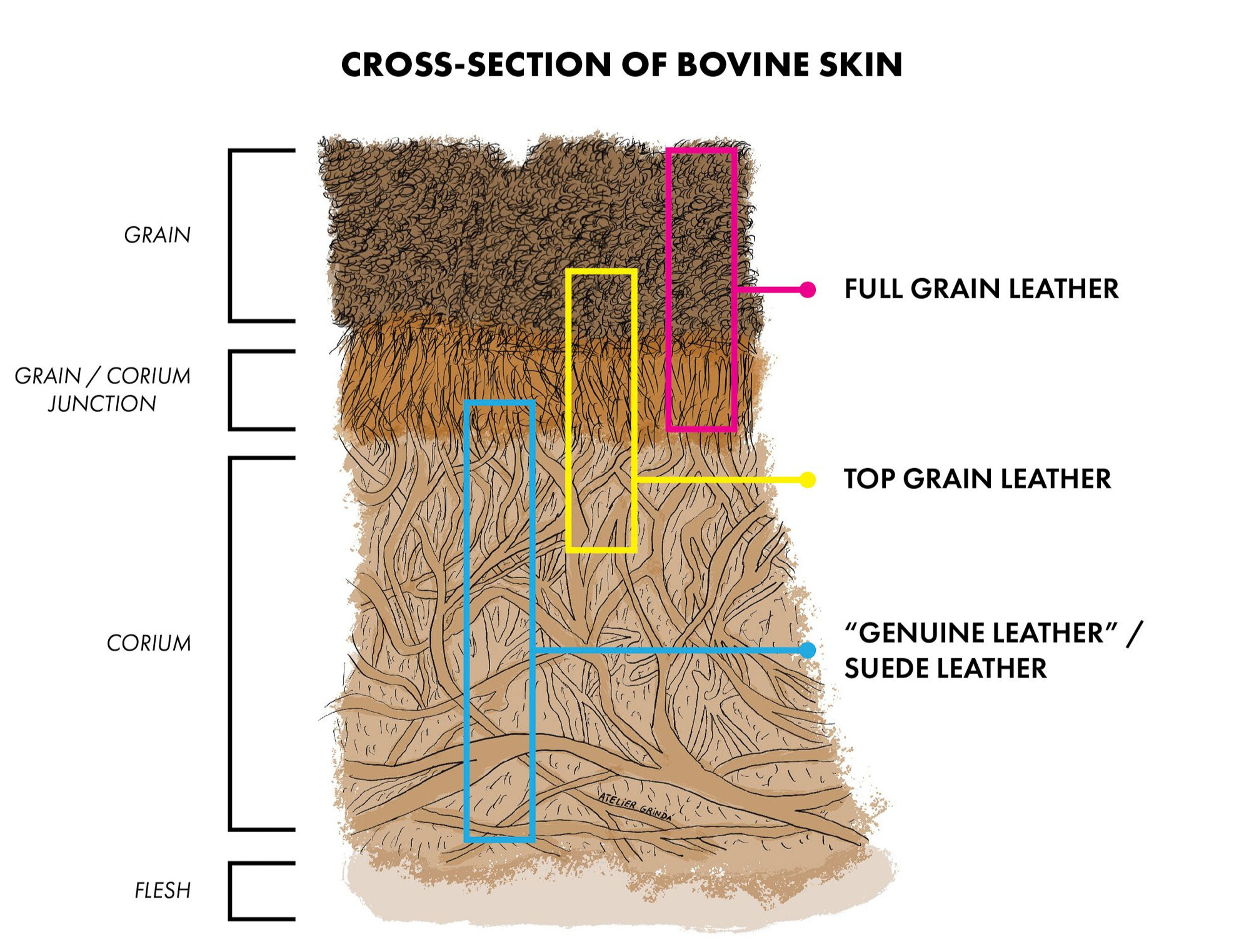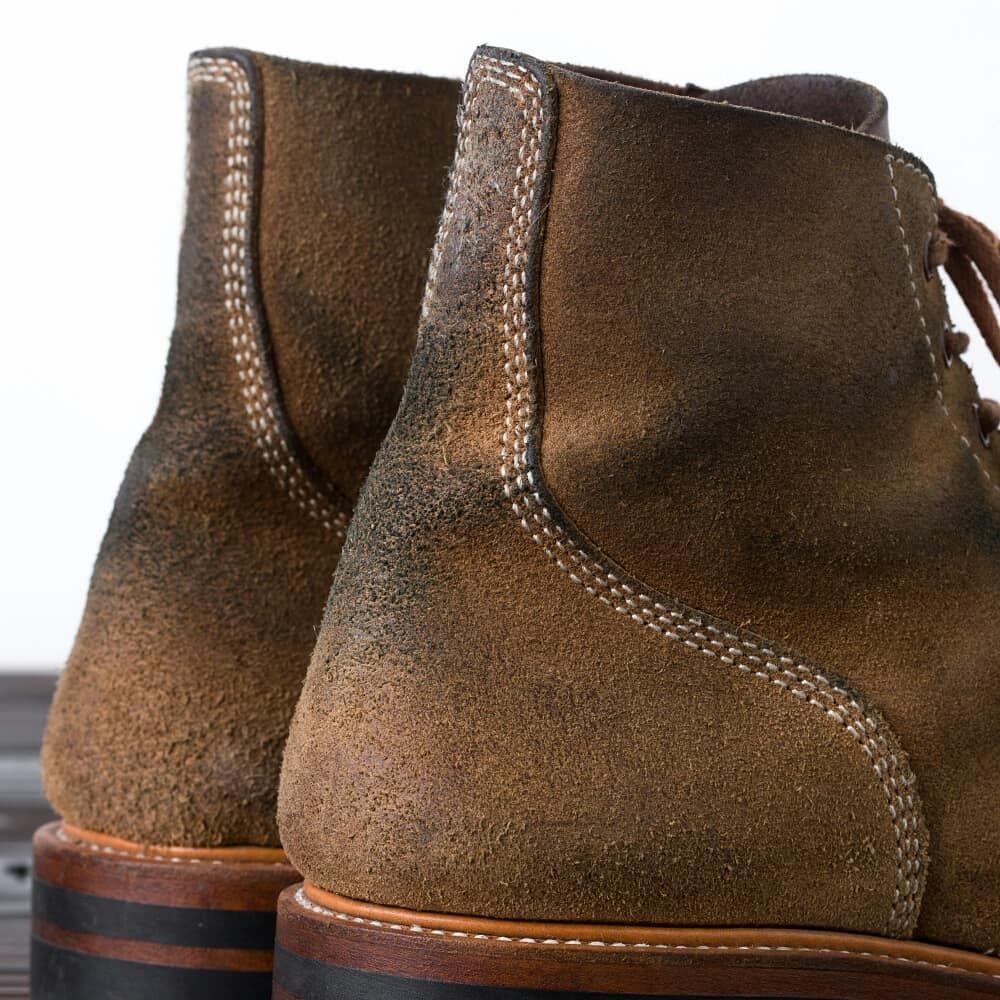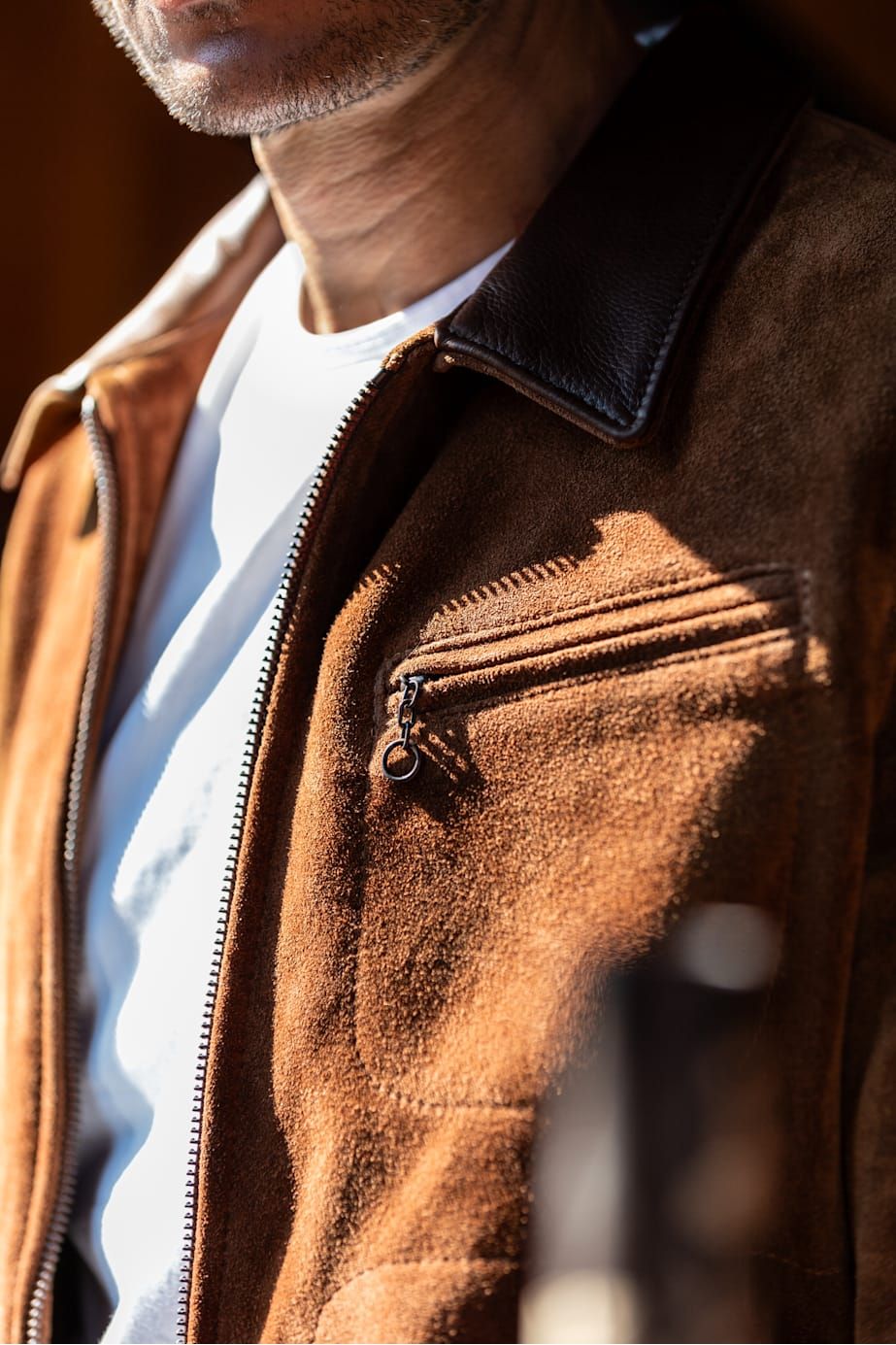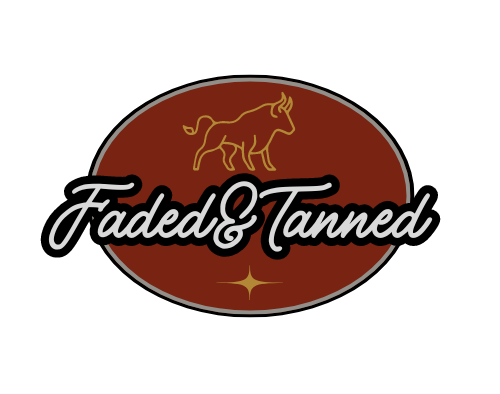In recent years, the world of leather goods has witnessed a resurgence of interest in rugged, artisanal products that exude a sense of raw, unbridled beauty. From bespoke leather jackets to handmade work boots, consumers are increasingly seeking out unique, high-quality leather items that reflect their individuality.
At the heart of this movement lies roughout leather, a distinctive and highly prized leather type that boasts exceptional durability and style. But what sets roughout leather apart from other types of leather, and why is it becoming the go-to choice for artisans and enthusiasts alike? Let’s delve into the world of roughout leather and uncover its secrets.
What is Roughout Leather?
Roughout leather is essentially the underside of a hide’s grain, where the fuzzy and nappy texture of the corium is exposed. This unique finish is achieved by turning the leather inside out, revealing the rough, hairy surface that was once connected to the animal’s muscles and subcutaneous fat.
To understand how roughout leather is created, it’s essential to know the anatomy of a hide. Each piece of full-grain leather has two distinct sides: the smooth, finished grain side, which was the animal’s outer layer of skin, and the rough, textured underside, known as the corium. When the leather is flipped over to showcase the corium, it becomes roughout leather, also referred to as reverse leather or flesh-out leather. This unique characteristic gives roughout leather a distinctive look and feel that’s often associated with vintage leather. 
Characteristics of Roughout Leather
Roughout leather is known for its rugged, untreated surface, which showcases the natural grain and texture of the leather. This gives roughout leather a distinctive, organic look that’s perfect for those who want a more rustic, handmade aesthetic. Roughout leather is also incredibly durable and resistant to wear and tear, making it a popular choice for work boots, belts, and other leather goods.
Types of Roughout Leather
-
Full-Roughout Leather: This type of roughout leather has not been buffed or sanded at all, resulting in a completely natural, untreated surface. Full-roughout leather is perfect for those who want a truly rugged, handmade look.
-
Half-Roughout Leather: This type of roughout leather has been lightly buffed or sanded to remove some imperfections, resulting in a slightly smoother surface. Half-roughout leather is perfect for those who want a more refined look without sacrificing the natural beauty of the leather.
Roughout vs Suede Leather
When it comes to rugged, textured leathers, roughout and suede are often mentioned in the same breath. However, they’re not interchangeable terms. Roughout leather is essentially the underside of a hide’s grain, with a natural, fuzzy texture that’s perfect for those who want a unique, laid-back look. On the other hand, suede is made by splitting the hide and taking only the soft, inner part, resulting in a velvety material with a uniform appearance.
So, when does suede take center stage? Suede is often preferred for articles that require a more refined, elegant look, such as dress shoes, luxury handbags, and high-end clothing. Its uniform texture and softness make it ideal for creating sleek, sophisticated designs. Additionally, suede is often used in upholstery and interior design, where its velvety texture can add a touch of luxury to a room.
Roughout leather, on the other hand, is perfect for articles that require a more rugged, durable look, such as work boots, belts, and outdoor gear. Its natural texture and fuzzy surface make it ideal for creating a distressed, vintage look that’s perfect for casual, laid-back styles. Roughout leather is also a popular choice for bespoke leather goods, such as handmade wallets and watch straps, where its unique texture can add a touch of personality to a piece.
For a deeper dive into the world of suede and nubuck leather, check out our detailed article “Suede vs Nubuck” for an in-depth comparison of these two luxurious leather types.
Uncovering the Roots of Rugged Elegance: The Origin of Roughout Leather
To understand the origins of roughout leather, let’s take a step back in time. Roughout leather has its roots in traditional leatherworking techniques, where artisans would use the underside of animal hides to create durable, long-lasting leather goods. This technique was particularly popular in the production of leather shoe types, such as work boots and rugged footwear, where the rough, textured surface provided added traction and durability.
Throughout history, roughout leather has been used in various cultural contexts, often symbolizing strength, resilience, and craftsmanship. In ancient civilizations, such as the Native American and African cultures, roughout leather was used to create ceremonial garments, accessories, and footwear. In Europe, roughout leather was used extensively in traditional craftsmanship, particularly in the production of leather goods such as belts, bags, and saddles. The rugged texture of roughout leather made it an ideal choice for creating durable, long-lasting products that could withstand the rigors of daily use.
Unraveling the Charm of Roughout Leather: Characteristics and Benefits
Roughout leather is distinguished by its unique texture, grain, and color, each contributing to its appeal and functionality. Its distinctive characteristics include:
Texture: Unlike the smooth finish of traditional leather, roughout leather features a rugged, suede-like texture. This is achieved by utilizing the flesh side of the hide, which is naturally napped, providing a soft yet durable surface. This texture not only enhances its aesthetic appeal but also offers practical benefits, such as concealing scuffs and scratches, making it a preferred choice for items subjected to rough use
Grain: In roughout leather, the grain side—the outer layer of the hide—is turned inward, exposing the fibrous underside. This method retains the hide’s full-grain integrity, ensuring the leather’s strength and durability. By keeping the grain intact, roughout leather maintains the toughness of full-grain leather while presenting a unique, textured surface.
Color: Roughout leather typically showcases earthy tones such as tan, brown, and grey. These natural hues can vary depending on the animal hide and tanning process. Over time, roughout leather develops a rich patina, with exposure to elements and handling deepening its color and enhancing its visual appeal. This aging process adds character, making each piece unique.
Benefits of Roughout Leather Across Applications:
Work Boots: Built to Last
Roughout leather is a top choice for work boots due to its exceptional durability. The textured surface resists scratches, scuffs, and wear better than smooth leather, making it ideal for harsh environments. Its natural grain also makes maintenance easier since dirt and marks blend seamlessly with its rugged appearance.
Belts and Bags: A Statement of Style
Belts and bags made from roughout leather offer a perfect balance between functionality and aesthetics. The supple yet sturdy texture adds a touch of uniqueness, while its resistance to wear ensures these accessories last for years.
Leather Shoe Types: Beyond Boots
While roughout leather is synonymous with boots, it’s also making waves in other leather shoe types. Loafers, moccasins, and casual sneakers crafted from roughout bring a stylish, laid-back vibe to any outfit. The material’s ability to adapt to various designs makes it a favorite among footwear artisans.
Why Boot Lovers Adore Roughout Leather?
Boot enthusiasts around the globe swear by roughout leather for several reasons:
- Unmatched Durability: It withstands the rigors of daily wear, from hiking trails to construction sites.
- Effortless Maintenance: Scuffs and dirt only add to its character, requiring minimal upkeep.
- Classic Aesthetic: The rugged texture pairs perfectly with casual and workwear styles.
- Comfort: The natural grain ensures a snug fit that molds to the foot over time.
For these reasons, roughout leather boots are a staple in any serious boot lover’s wardrobe.
The Growing Popularity of Roughout Leather Jackets:
In recent years, roughout leather has transcended footwear to become a sought-after material for jackets. Here’s how a roughout leather jacket differs from a regular one:
- Texture: While traditional leather jackets boast a glossy finish, roughout jackets offer a matte, suede-like texture.
- Durability: Roughout leather’s rugged nature makes it more resistant to scratches and stains.
- Style: The earthy tones and vintage appeal of roughout jackets make them a versatile addition to any wardrobe.

Roughout leather jackets are perfect for those who appreciate a blend of style and substance. For the latest styles and must-haves, check out our detailed article on “Leather Jacket Trends for 2025” to stay ahead of the fashion curve!
Sustainability and Eco-Friendliness of Roughout Leather:
Roughout leather isn’t just about aesthetics and performance; it’s also a more sustainable choice. By using the underside of the hide, manufacturers reduce waste and make use of parts of the leather that might otherwise be discarded. Additionally, the minimal processing required for roughout leather reduces the environmental footprint compared to heavily treated alternatives. Because roughout leather requires fewer chemicals and less energy during production, it’s a more eco-conscious option for environmentally aware consumers.
The Artisanal Craftsmanship Behind Roughout Leather and Patina development
Working with roughout leather demands a high level of craftsmanship and skill. Artisans employ specific techniques to shape, stitch, and finish this distinctive material:
- Shaping: The dense, fibrous nature of roughout leather requires precise cutting tools to achieve clean edges. Artisans must account for the leather’s thickness and texture to ensure accurate pattern making and assembly.
- Stitching: Due to its textured surface, stitching roughout leather can be challenging. Craftsmen often use reinforced stitching methods to ensure durability, paying close attention to thread selection and tension to maintain the leather’s integrity.
- Finishing: Unlike smooth leather, roughout doesn’t require extensive finishing. However, artisans may apply treatments to enhance its water resistance or to achieve a desired aesthetic, all while preserving its natural, rugged charm.
This meticulous craftsmanship results in products that are not only functional but also rich in character and uniqueness.
Patina refers to the natural sheen and character that develop on leather over time through use and exposure. In roughout leather, this aging process adds depth and beauty, making each piece truly one-of-a-kind.
- Development Factors: The formation of patina in roughout leather is influenced by factors such as exposure to sunlight, moisture, oils from the skin, and general wear and tear. These elements interact with the leather fibers, gradually altering its appearance.
- Enhancing Patina: To enhance the patina, regular use is key. Allowing the leather to age naturally without excessive cleaning or conditioning will enable a rich patina to develop.
- Preservation Tips: While embracing the aging process, it’s important to care for roughout leather to prevent damage. Gentle brushing to remove dirt and occasional application of appropriate leather care products can help maintain its durability and appearance.
The patina not only adds aesthetic appeal but also tells the story of the leather’s journey, reflecting its history and the experiences it has weathered.
Essential Tips for Caring for Roughout Leather
Maintaining roughout leather requires specific techniques to preserve its texture and appearance. Here’s how to clean, condition, and protect your roughout leather items:
Cleaning:
- Regular Brushing: For a gentle yet effective clean, use a soft-bristled brush to sweep away dirt and dust. Remember to brush in a single direction to preserve the texture and prevent tangling.
- Spot Cleaning: For stains, lightly dampen a clean cloth with water and gently blot the affected area. Avoid soaking the leather, as excessive moisture can cause damage.
Conditioning:
- Avoid Heavy Oils: Avoid using rich oils or conditioners, as they can weigh down the nap and change the texture. If conditioning is needed, choose products made for roughout leather and use them lightly, as a little goes a long way. Pig-Bristle Brush from Saphir is the perfect tool for the job – its sturdy bristles make quick work of cleaning and maintaining your leather.”
Protection:
- Waterproofing: Apply a suede or roughout-specific waterproofing spray to protect against moisture. Ensure the product is suitable for roughout leather to maintain its breathability and texture. For optimal care, consider the Medaille d’Or Dubbin – an excellent choice to moisturize and rejuvenate Rough-Out leather, while also restoring its waterproof barrier.
- Storage: Store items in a cool, dry place away from direct sunlight to prevent fading and drying out. Use breathable covers to protect from dust while allowing airflow.
To learn the best methods for keeping your leather goods looking their best, check out our in-depth article “Saddle Soap vs Leather Conditioner” for expert tips on cleaning and conditioning leather.
Common Mistakes to Avoid
Proper care involves not only following best practices but also avoiding common pitfalls:
- Using Harsh Cleaners: Steer clear of harsh chemicals like solvents, detergents, or alcohol-based cleaners, which can strip away the leather’s natural oils and cause lasting damage.
- Excessive Moisture: Do not saturate roughout leather with water. If the item becomes wet, allow it to air dry naturally, away from direct heat sources, to prevent shrinkage and hardening.
- Improper Conditioning: Applying inappropriate conditioners can ruin the nap and texture. Always use products formulated for roughout leather and follow the manufacturer’s instructions.
Roughout leather stands out for its unique texture, exceptional durability, and rugged aesthetic. Its versatility makes it a preferred choice for crafting boots, bags, and jackets that are both functional and stylish. The material’s resilience and low-maintenance nature further enhance its appeal.
Embracing roughout leather means appreciating the artisanal craftsmanship that transforms the hide’s underside into durable, elegant products. As it ages, roughout leather develops a distinctive patina, adding character and depth to each piece.
By understanding “What is Roughout Leather?” and its unique qualities, you can make informed choices and enjoy the timeless beauty and functionality it offers.

